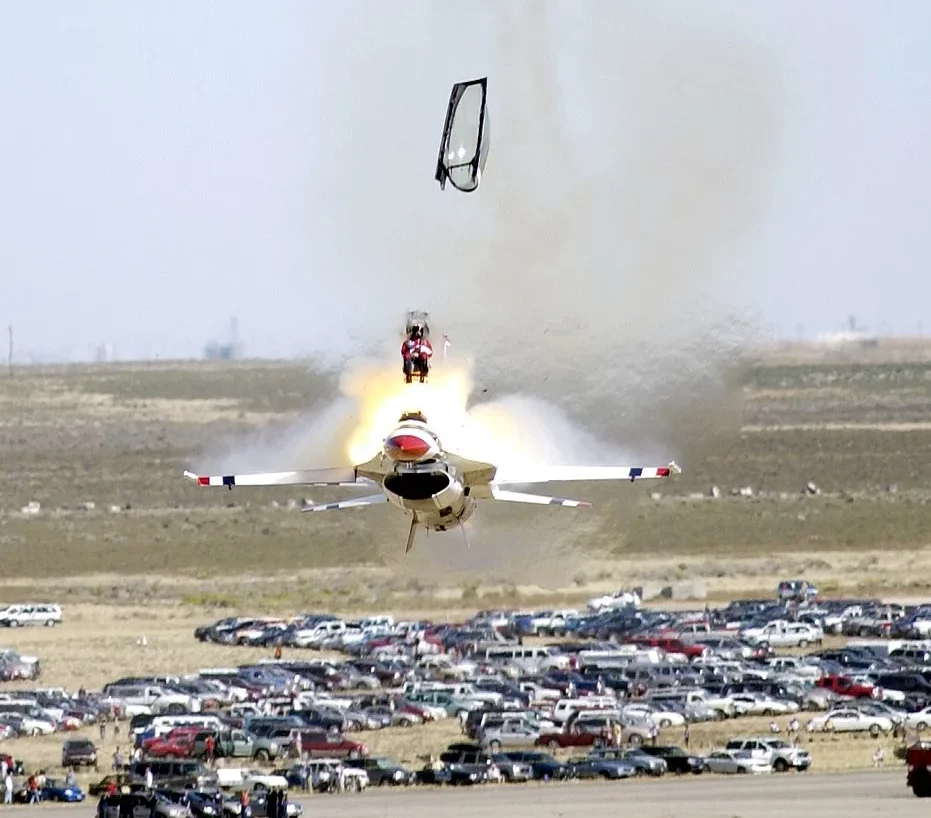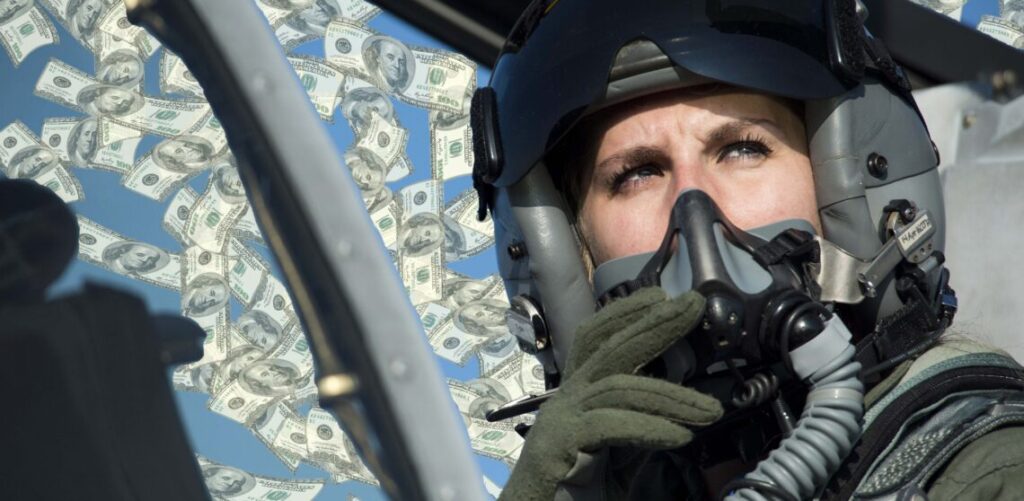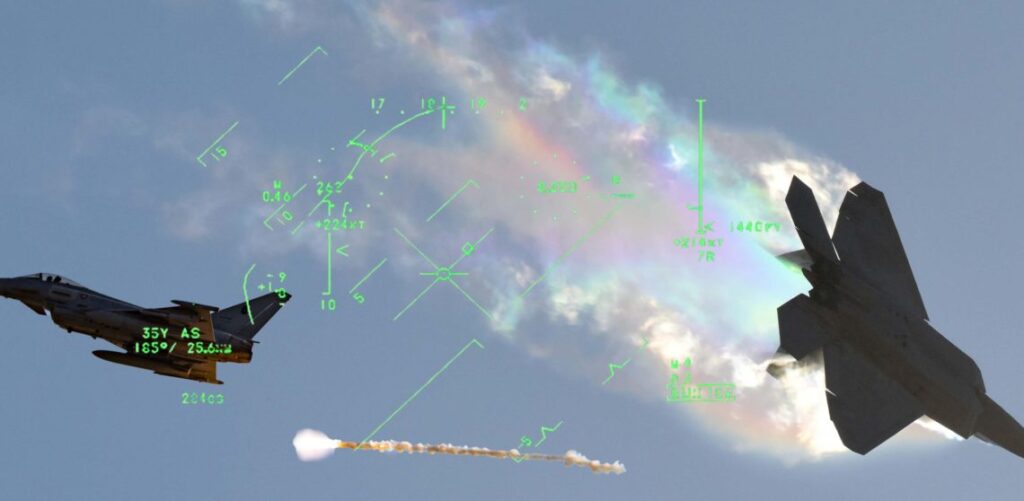On December 15, 2022, an F-35B Lightning’s vertical landing on a runway in Fort Worth, Texas took a disastrous turn when an aggressive bounce pitched the fighter jet forward onto its nose. The 5th-generation fighter became a protractor, its front landing gear shredding as it carved a circle around the nose point grinding into the tarmac.
Caught on cell phone video, the crash is a 30-second series of astonishing events. But just as it seems the aircraft is settling to a stop, its canopy explodes upward. Seconds later, the pilot descends in a parachute, having executed a successful emergency ejection.
#Breaking New much clearer video, courtesy Kitt Wilder, of STOL variant F35 B model landing JRB Fort Worth, and pilot ejects. Condition of pilot still unknown. @CBSDFW pic.twitter.com/BeERIeyhtO
— Doug Dunbar (@cbs11doug) December 15, 2022
We are told that the pilot ejected safely and with no serious injuries. The F-35B, the short takeoff and vertical landing (STOVL) variant flown by the Marine Corps, had not yet been delivered to the service; it was still being operated by manufacturer Lockheed Martin Corp., which has its headquarters in Fort Worth.
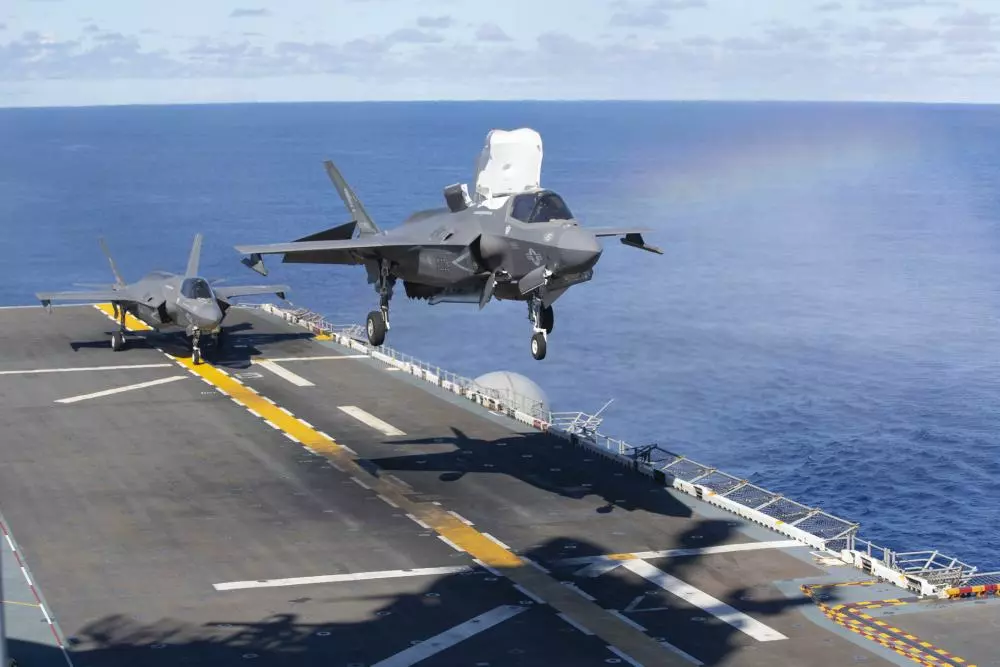
It’s not clear what caused the crash landing and the entire sequence of events leading up to the pilot’s ejection. While the F-35B is the only U.S. fighter jet equipped with an auto-ejection capability, which senses specific high-duress conditions and involuntarily boots the pilot, thus adding a layer of survivability under circumstances in which the pilot might be incapacitated or overwhelmed. Official sources haven’t said if that feature was deployed in the December 15 crash.
What is absolutely clear is that this unidentified Air Force pilot has just joined the most exclusive club in military aviation: the Martin-Baker Tie Club. Martin-Baker, a British company that designs ejection seats for 93 different military air services across the globe, keeps track of every life-saving deployment of its ejection seats. The airman who bailed from the F-35 was club member 7,686. That comes out to an average of 65 life-saving ejections – and new inductees – per year since the first member, a Royal Air Force pilot, joined the club in 1957.
Yesterday, a USAF F-35B aircraft crashed at Joint Reserve Base, Fort Worth. The pilot ejected successfully using the Martin-Baker US16E Ejection Seat. pic.twitter.com/oN0cSZteba
— Martin-Baker (@MB_EjectEject) December 16, 2022
Related: How Aviation Week beat Air Force security to steal pics of the stealth bomber
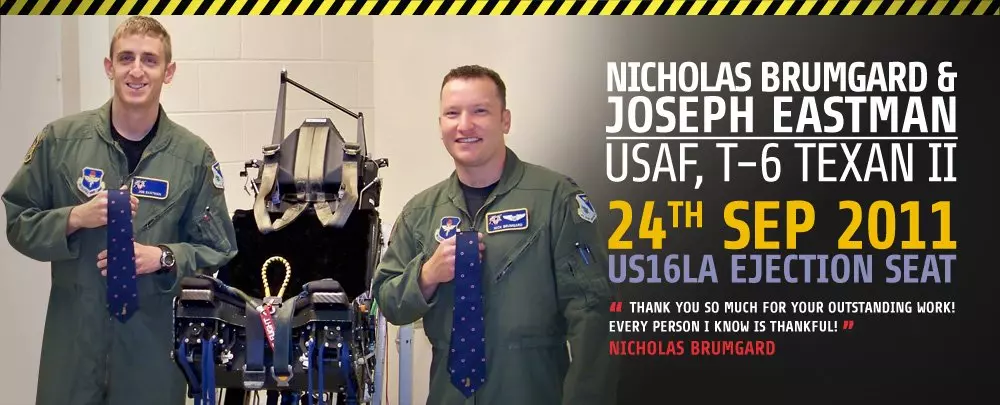
“The primary objective of the Club is to provide a distinctive tie to be worn with civilian clothing which provides a visible sign of the members’ common bond. Every Club member is given a certificate, membership card, patch, tie, pin or a brooch for the women,” Martin-Baker’s website states.
“All Tie Club memorabilia depicts a red triangle warning sign, the recognised international danger symbol for an ejection seat,” it adds.
Q – What exclusive club does no one want to join…but once admitted, members are forever grateful and happy to be a part?
— Bremont Military (@BremontMilitary) September 11, 2018
A – The Martin Baker Tie Club#MartinBaker #TieClub #WorldsMostExclusiveClub #Bremont #MBI @Bremont @MB_EjectEject pic.twitter.com/mkBPM1c5c6
For the watch enthusiasts, of whom there are many among military pilots, Martin-Baker also offers a “special price” on a special Bremont watch that features the triangular ejection danger symbol and a tiny version of the iconic black-and-yellow pull handle on the back of the seconds hand. Each watch has been subjected to “live ejection seat testing,” putting the timepiece under the same extreme G-forces pilots experience during ejection, juuuuuust in case lightning strikes twice and club members end up adding further disparity to their takeoff-to-landing ratio.
Related: How one Serbian commander proved stealth is not invisibility
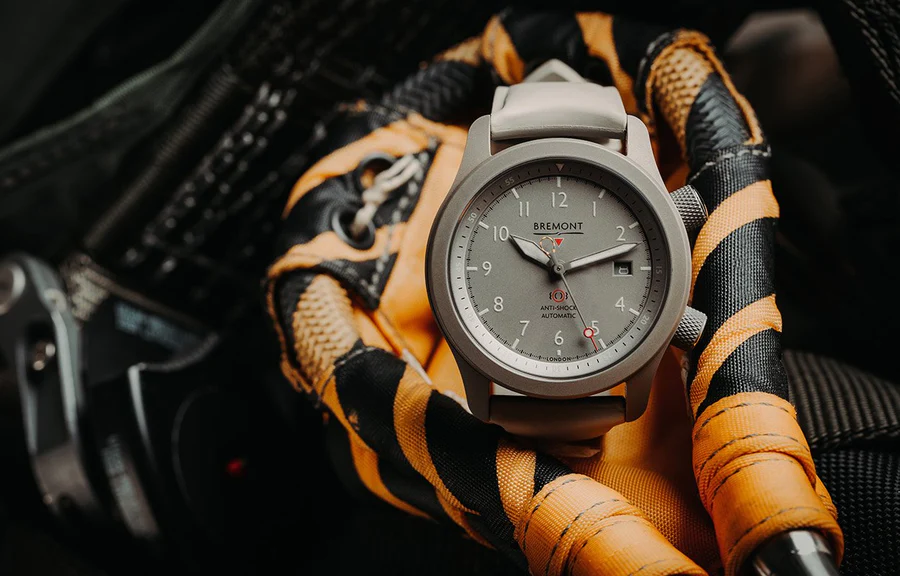
Founded by Sir James Martin, who also founded the company, the club is now kept going by his grandson Andrew.
Surviving an aircraft emergency that requires ejection is no mean feat. A 2019 academic paper found that the survival rate for fighter aircraft ejection was just under 90%, meaning one in 10 pilots don’t live to tell their stories. Those who do make it often sustain injuries from the force of the rocket-powered seat or the landing, which may deposit them in harsh terrain or the freezing ocean.
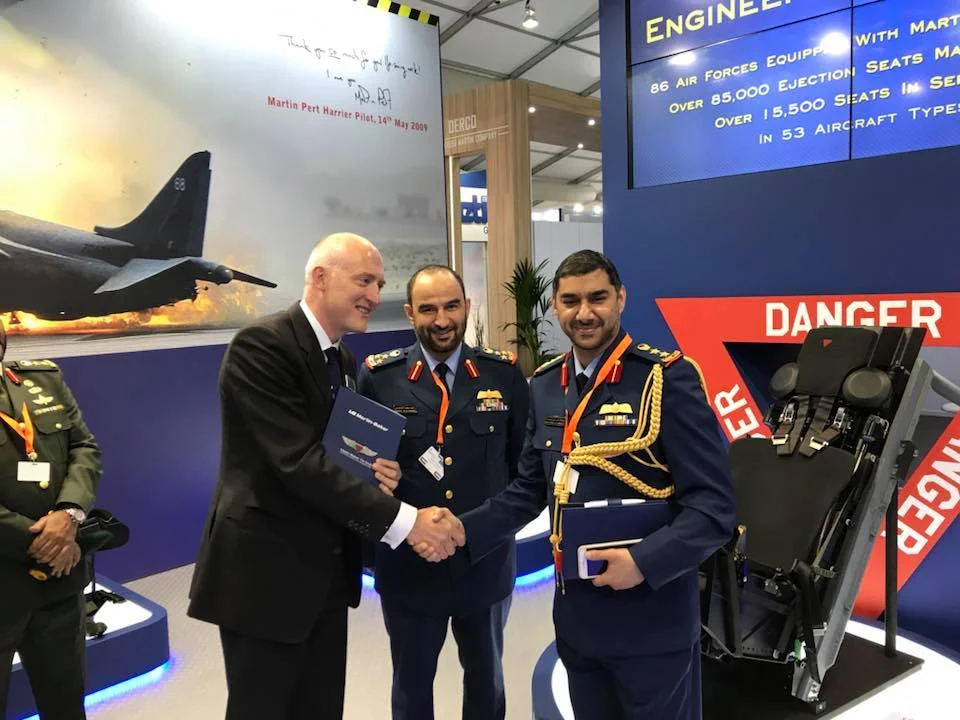
According to Smithsonian Magazine, “flailing limbs can get torn off by 600 mph winds, and ejection delays often shorten descents, and that increases the riskiness of the parachute landings. Women pilots, who weigh on average 50 pounds less than their male counterparts, are especially at risk because the lighter the object, the faster the toss and the greater the oscillation.”
Invariably, ejection survivors have astonishing stories to tell.
Take this one, from retired Navy commander Todd Parker, ejectee #4,822, published from his own account on the Martin-Baker website. Parker had been aboard the carrier Theodore Roosevelt, headed up the Adriatic toward Bosnia in 1995. He’d completed a check flight on his F-14 Tomcat and was headed back to the carrier for a tailhook landing.
Related: This cockpit video shows the moment 2 Navy Tomcats shot down Libyan MiGs
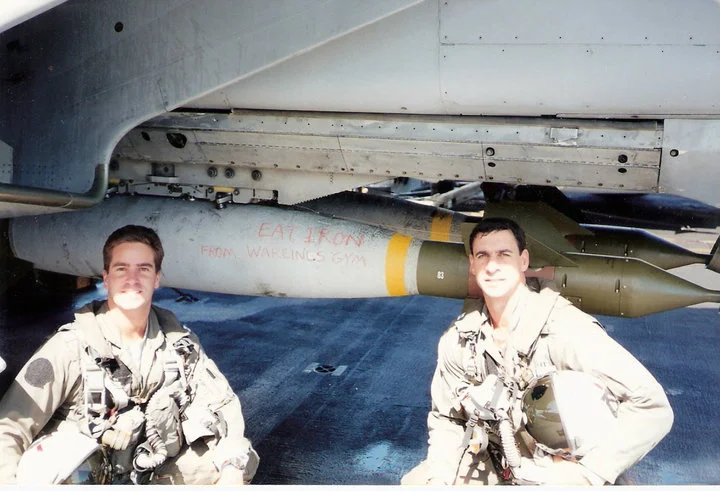
“Suddenly the jet began bucking like a bronco – negative 2 Gs followed by 5 Gs, back and forth for about one minute, then it suddenly stopped. We couldn’t figure out what was wrong, but another aircraft joined up and noticed a mismatch in our horizontal stabilators,” he wrote.
“After two more events similar to the first, each time with the jet losing about 5000 feet, the jet suddenly pitched over into a negative 2 G dive and started rolling uncontrollably. I looked at the altimeter and it read 3000 feet so I pulled the handle. After the loud flash and bang, I found myself under the parachute, and looked down just in time to see the jet hit the water – what turned out to be just four seconds after we ejected.”
Parker was rescued from the water 45 minutes later and would go on to meet his future wife the following month.
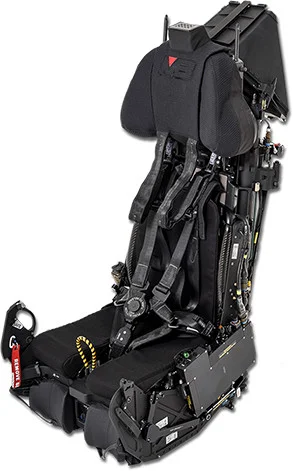
While we still don’t know all the circumstances surrounding the latest ejection or whether it was voluntarily executed, it does highlight the capabilities of the US16E ejection seat, a variant specially designed for all variants of the F-35.
Based on the Mk16 seat used in aircraft including the Air Force T-38 Talon trainer and the Eurofighter Typhoon, the F-35’s seat has added protections against neck injuries. Those are a retrofit, as early testing with dummies showed the seat could result in snapped necks during low-speed ejections. Until a fix was implemented, pilots weighing less than 136 pounds were barred from flying the aircraft.
When a pilot pulls the striped ejection seat cord, a series of functions takes place, perfectly choreographed to create the best chances for survival. As Smithsonian Magazine details, a hatch or canopy is unlocked or jettisoned to allow for aircrew egress. Seat sensors then measure airspeed and altitude, calculating which of several modes to engage. Based on the circumstances of the ejection, the parachute configuration and opening time may be different, and the seat may supply supplemental oxygen to the ejectee. When the seat has completed its split-second ejection calculations, a catapult launches the aircrew member clear of the aircraft at speeds of up to 600 miles per hour. Then rocket motor assembly known as STAPAC engages to stabilize the ejectee in free fall before the parachute opens.
One B-1 Spirit crew member reported losing an inch in height due to the G-forces exerted on his spine in the ejection process, according to the magazine.
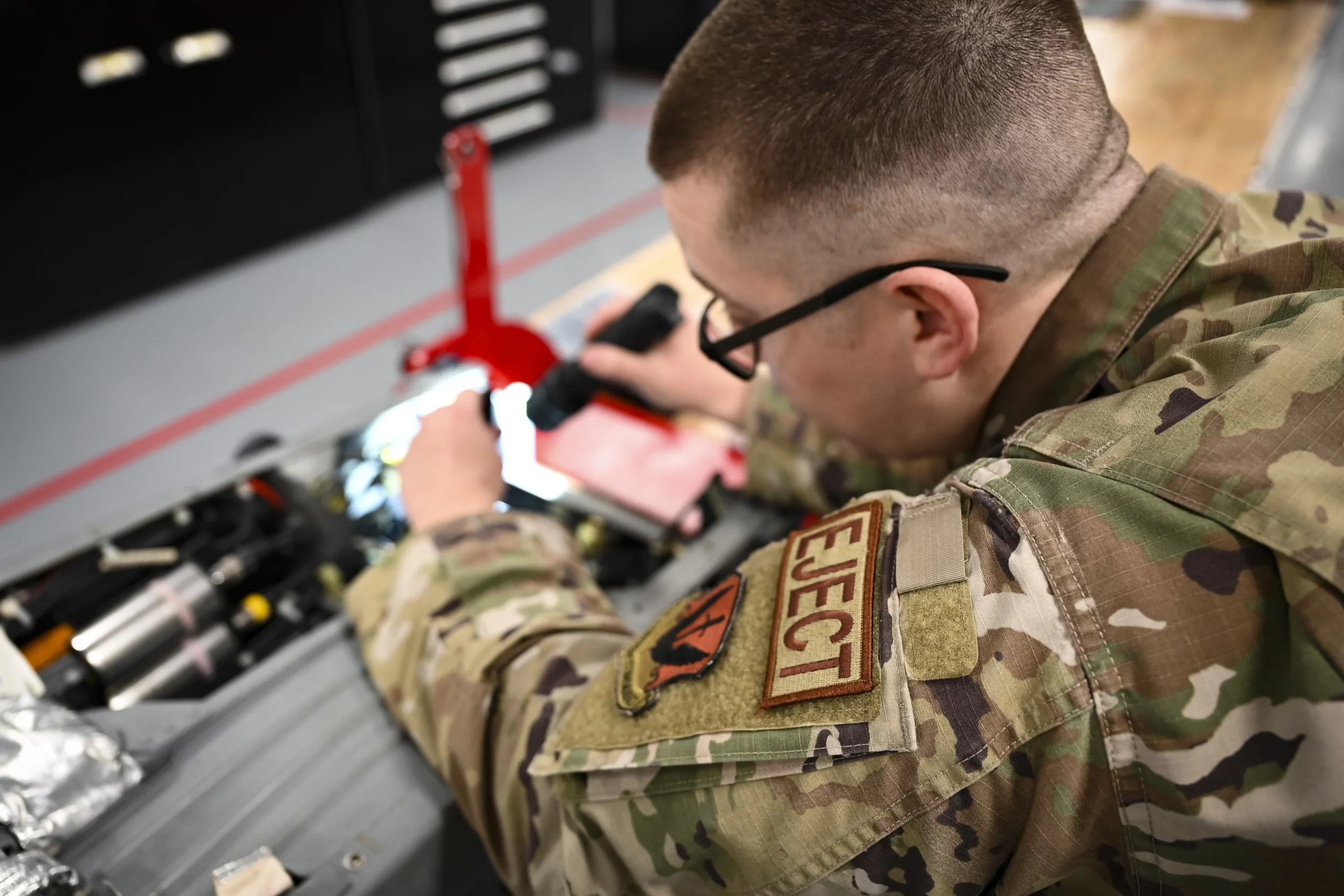
The ability to eject while at zero elevation on a runway is no mean feat either. Zero-zero ejection seats, deployable when the aircraft is on the ground and at a full stop, did not exist until the 1960s. In 1965, Air Force Maj. Jim Hall volunteered to be a human test subject to validate a seat that had the rocket power to launch a pilot well clear of a plane on the ground and a parachute that would deploy almost instantly. According to Martin-Baker, today’s zero-zero seats blast ejectees up to 300 feet into the air.
The most fortunate pilots will never be qualified to join the Martin-Baker Tie Club. But for those who do have to pull the cord, it’s good to have a distinctive memento of survival.
As famous ejectee Chuck Yeager once said, “The secret of my success is that I always managed to live to fly another day.”
Editor’s Note: This article was originally published in December 2022. It has been edited for republication.
Read more from Sandboxx News
- America’s F-22 will see serious upgrades before retirement
- Letters to Loretta: An American B-17 bomber versus Nazi fighters
- The most important difference between the F-35 and Su-57 summed up in one picture
- Questions about Ospreys’ safety remain as SpecOps aircraft finally returns home following incident in Norway
- The true story behind why Iran had F-14s for Maverick to steal in Top Gun
